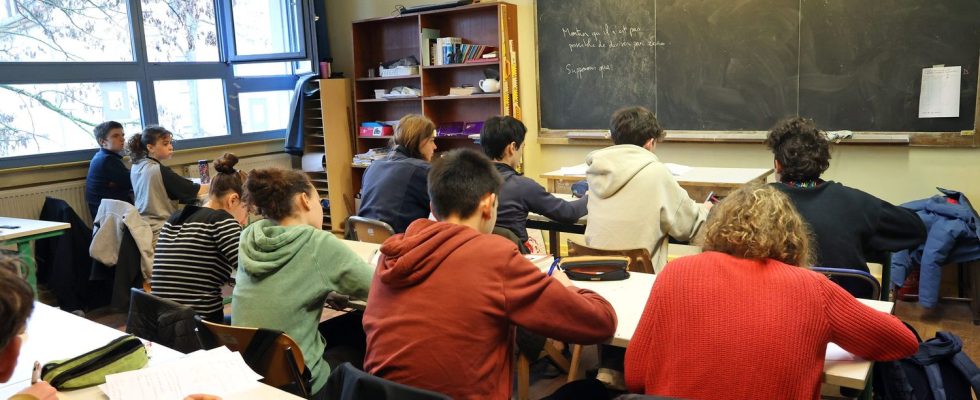In the midst of the controversy over the “clash of knowledge” desired by the government, the general secretary of the SNES-FSU union assures that we do not need level groups but smaller classes, arguing that France “holds the record for classes the busiest in Europe. It’s true.
Published
Update
Reading time: 2 min

Despite the protest, the government maintains its desire to establish level groups in French and mathematics. This is the flagship measure of the “shock of knowledge” reform, desired by Prime Minister Gabriel Attal, to raise the level of students. Guest of franceinfo, the general secretary of SNES-FSU, the main union in the secondary sector, contests this reform. Sophie Vénétitay does not want level groups, but she insists on the need to reduce class numbers. “I remind you that France holds a sad record, the record for the busiest classes in Europe”. True or false ?
On average, in France, 22 students per class in primary school, and 26 in middle school, the worst result in the European Union
It’s true. France has the worst result in the European Union, according to data compiled by the Directorate of Evaluation, Foresight and Performance (DEPP) of the Ministry of National Education, published in 2023, and relating for the 2020-2021 school year. In primary school, on average, France has 22 children per class. This is two students more than the European average. In middle school, there are almost 26 students per class in France, three more than the European average. Far ahead of Italy, for example, which has 20 children per class on average in middle school. In high school, the comparison is more difficult, with the options systems very different depending on the country.
The situation has been stable in recent years in French colleges, as evidenced by INSEE data. On the other hand, in primary school, there are, on average, fewer and fewer students per class in public schools, after successive reforms since 2017, with the gradual implementation of a cap of 24 students in CP, CE1 and CE2 and the splitting of CP classes, in schools in the priority education network (REP and REP+). According to a note from the DEPP, between 2015 and 2023, the average size of CP classes in REP+ decreased from 21.7 to 12.6 children. And this dynamic is found in all public primary schools.
Reducing class size has positive effects on academic results, especially in primary schools
The Ministry of National Education made an initial assessment of this reform, two years after its introduction, on student results. “The students concerned made faster progress than elsewhere”, notes the ministry. More than 98% of teachers say they were able to better identify students’ needs and therefore respond better to them. More than 80% of them also noticed better classroom dynamics.
These results are consistent with what the scientific literature says on the subject. Many studies have been published to evaluate the effect of reducing class sizes. According to the work of the Public Policy Institute, which compiled nine studies “robust” on the subject, reducing class size, while maintaining heterogeneous groups, has effects on academic results, especially in primary school and especially for students from disadvantaged backgrounds. This also helps improve the well-being of students and teachers.
